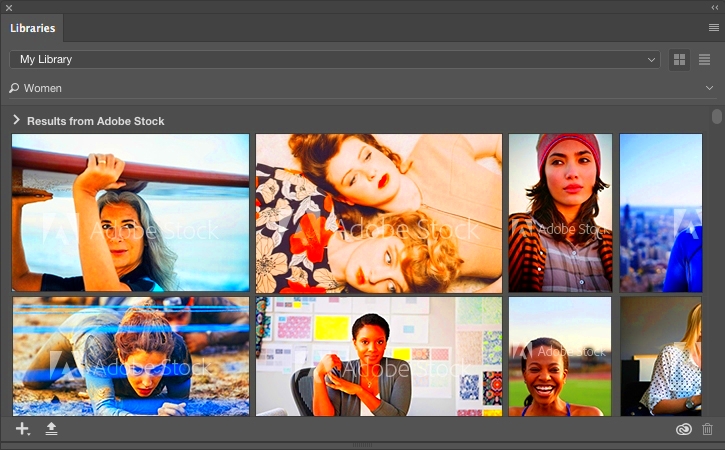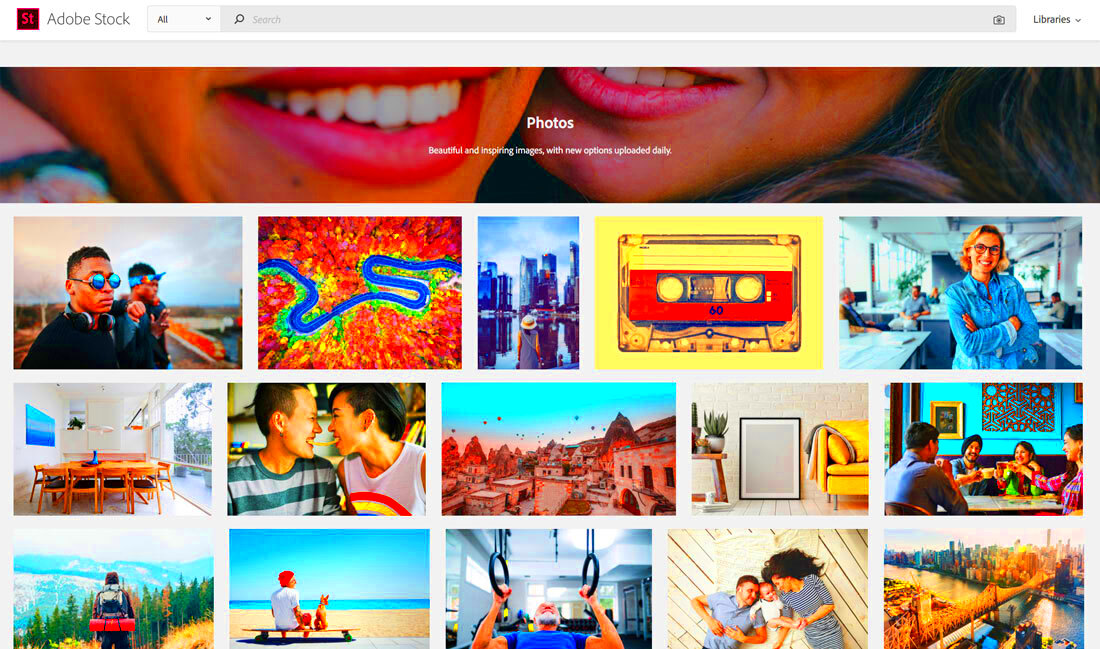Adobe Stock is a favourite for many artists all around Usa because it provides a wide range of quality pictures and audio-visuals. I frequently depend on visuals for my assignments; therefore this has been an incredible asset for me. A couple of clicks suffice for me to get precisely what I want to manifest my concepts in three dimensions. It is not simply an image bank; it is rather, as it were, the intersection of creativity with comfort; hence my enthusiasm to narrate my story through you.
Benefits of Using Adobe Stock for Your Projects
 Creative workflow can be altered by utilizing Adobe Stock. Key advantages that strike me include:
Creative workflow can be altered by utilizing Adobe Stock. Key advantages that strike me include:- High-Quality Content: The quality of images is consistently impressive, making it easy to find professional visuals that enhance any project.
- Seamless Integration: Adobe Stock integrates beautifully with other Adobe products like Photoshop and Illustrator, streamlining my editing process.
- Diverse Library: With millions of assets available, there’s something for every niche, whether you’re looking for traditional Usa motifs or modern abstract designs.
- Flexible Licensing: The licensing options are straightforward, allowing you to use images without worrying about legal issues.
I have saved many hours trying to find suitable visuals because of these advantages, and it has enabled me to concentrate on what is paramount: creating.
Types of Content Available on Adobe Stock
 Αdobe Stock contains multiple types of artistic materials catered to various creatives. Below is a summary of what they have:
Αdobe Stock contains multiple types of artistic materials catered to various creatives. Below is a summary of what they have:| Type of Content | Description |
|---|
| Photos | From breathtaking landscapes to candid portraits, the photo collection is extensive and varied. |
| Vectors | Perfect for graphic designers, the vector graphics allow for scalability without loss of quality. |
| Videos | High-definition video clips can be used for everything from social media content to professional presentations. |
| Templates | Ready-made templates help streamline the design process for various projects. |
| 3D Assets | For those venturing into three-dimensional design, Adobe Stock offers 3D models that can elevate your work. |
Each project feels thrilling since I have such a vast variety of contents to access. My creativity is often triggered by going through different sections in order to see which one can ignite it. There is simply no limit!
How to Effectively Search for Images and Videos

To look for the appropriate visuals in
Adobe Stock is similar to searching for a lost treasure. With millions of assets, it can be tough but believe me, by applying some few techniques you will always make things simpler. I recollect my first experience on that platform; I scrolled through the pages for hours nonstop. Now I have an approach before approaching that site.
Some of the techniques I find very useful are:- Use Specific Keywords: Think about what you really want. Instead of typing "nature," try "sunset over the Himalayas." This narrows down your search significantly.
- Utilize Filters: Adobe Stock has filters for orientation, color, and even the type of asset. These tools can help you find exactly what you’re looking for in no time.
- Explore Collections: Don’t overlook curated collections. These often highlight trending themes or seasonal content, giving you inspiration while saving time.
- Check Related Assets: After selecting an image, scroll down to see similar content. It’s a great way to find additional visuals that complement your choice.
My search process has been quicker and more enjoyable than before because of these tips I applied. Knowing what you need is most important thing – let the site lead you through it.
Using Adobe Stock in Your Creative Workflows
Integrating
Adobe Stock into your creative workflow can feel like adding the perfect spice to your favorite dish. It enhances the flavor without overshadowing the core ingredients. As a content creator, I’ve found ways to seamlessly blend
Adobe Stock into my projects, making my life a lot easier.
This are a few methods for integrating Adobe Stock into your routine activities:- Starting with Mood Boards: I often create mood boards for my projects using images from Adobe Stock. This helps set the tone and direction, making it easier to visualize the final outcome.
- Direct Import into Adobe Apps: The ability to access Adobe Stock directly from apps like Photoshop saves a lot of time. I can search for visuals without leaving my workspace.
- Editing on the Go: Once I’ve found the perfect image, I can quickly edit it right there in Photoshop. This streamlines the process and keeps my creative juices flowing.
- Collaboration with Teams: When working with others, I can easily share links to specific assets, making discussions more productive.
I am starting to understand that those small integrations have the ability to save one’s time and improve their inventiveness in a great way. It is purely about utilizing equipment in a right manner.
Tips for Choosing the Right Visuals
It is very essential to select appropriate visuals for your project. I have gone through an experience of this; many times I used to select photo that were good looking but they didn’t connect with the audience.
This are some of my learnings on how to select images from Adobe Stock:- Know Your Audience: Always keep your audience in mind. An image that speaks to you may not connect with your viewers. Ask yourself, “What emotions do I want to evoke?”
- Maintain Consistency: If your project has a theme, ensure your visuals align with it. Consistency in color and style can elevate your work significantly.
- Quality Over Quantity: It’s tempting to add more images, but sometimes less is more. Choose a few impactful visuals rather than crowding your design.
- Consider the Context: Think about where the visuals will be used. An image that works well on a website might not suit a print ad.
By utilizing the above suggestions, my technique for selecting images visually has really changed dramatically. Each picture has its own tale to tell and quitting away with the best can actually wear out your story.
Common Mistakes to Avoid When Using Adobe Stock
I produced several mistakes when I began working with Adobe Stock initially. Getting lost in such an array is so simple and you might overlook some things that are essential. However, my errors have lead me to adjust my methods so that’s why I am telling you these common errors you should avoid.
A couple of blunders you should steer clear from.- Ignoring Licensing Details: Always read the licensing information carefully. I once used an image without understanding its limitations, which led to unnecessary headaches. Knowing the terms will save you from potential legal issues.
- Choosing Low-Quality Images: In a rush to find something quickly, I picked images that were grainy or poorly composed. Quality matters! Always opt for high-resolution images that enhance your project.
- Overusing Stock Images: Relying too much on stock images can make your work feel generic. Mix in original content to keep your projects unique and authentic.
- Neglecting to Customize: Just because you’ve found a great image doesn’t mean you should leave it as is. Adding your personal touch—whether it’s a filter or overlay—can make a world of difference.
I have been able to develop more captivating and refined projects by evading these blunders. The process is never-ending in terms of learning and improvement.It is not an easy task to prepare a research paper. All students know that apart from studying hard, they need experience and good writing abilities. Moreover, a well-written paper requires a lot of time for research and drafting. Such a paper contains the introduction with the thesis statement, three body paragraphs (each of which has its particular idea) and conclusion that summarizes it all.In addition to this, you ought to find suitable literary works, like books or articles, which are relevant to your topic in order to prove your statements with strong evidence. All these requirements seem too much for some students who even think about using plagiarism software while doing their homework instead of working on their original writing skills or literature knowledge development.
FAQ About Adobe Stock
Co as I have journeyed through Adobe Stock, I have faced numerous queries and some were even mine! Groups of common queries are compiled here to assist you get going.
| Question | Answer |
|---|
| What types of images can I find? | Adobe Stock offers photos, vectors, videos, templates, and 3D assets, catering to various creative needs. |
| How do I purchase assets? | You can buy assets individually or subscribe to a plan that suits your usage needs. |
| Can I use images for commercial purposes? | Yes, as long as you adhere to the licensing agreements. Make sure to check each image’s license. |
| Is there a free trial available? | Adobe Stock often offers free trials, allowing you to explore before committing. |
The frequently asked questions exhibit shared worries that I have had and by tackling them from the beginning, one can have an easier journey.
Conclusion on Utilizing Adobe Stock
In my creative journey, There is a better way of using Adobe Stock. It’s more than just looking for beautiful images; it’s about improving your storytelling and helping you develop your work. I feel supported in creating and innovating through this wide library and the use of Adobe tools.
All in all:- Plan Your Searches: Be specific and use filters to find what you need efficiently.
- Be Mindful of Quality: Always prioritize high-resolution images and thoughtful selection.
- Stay Original: Don’t forget to inject your unique style into your projects.
As you set off on your own adventure with Adobe Stock, keep in mind that it’s vital to explore, to try new things, and most importantly, to appreciate the journey of creativity. This is because every single image you choose can narrate a particular tale. Wishing you the best as you create!
 Creative workflow can be altered by utilizing Adobe Stock. Key advantages that strike me include:
Creative workflow can be altered by utilizing Adobe Stock. Key advantages that strike me include: Αdobe Stock contains multiple types of artistic materials catered to various creatives. Below is a summary of what they have:
Αdobe Stock contains multiple types of artistic materials catered to various creatives. Below is a summary of what they have: To look for the appropriate visuals in Adobe Stock is similar to searching for a lost treasure. With millions of assets, it can be tough but believe me, by applying some few techniques you will always make things simpler. I recollect my first experience on that platform; I scrolled through the pages for hours nonstop. Now I have an approach before approaching that site.Some of the techniques I find very useful are:
To look for the appropriate visuals in Adobe Stock is similar to searching for a lost treasure. With millions of assets, it can be tough but believe me, by applying some few techniques you will always make things simpler. I recollect my first experience on that platform; I scrolled through the pages for hours nonstop. Now I have an approach before approaching that site.Some of the techniques I find very useful are:
 admin
admin








